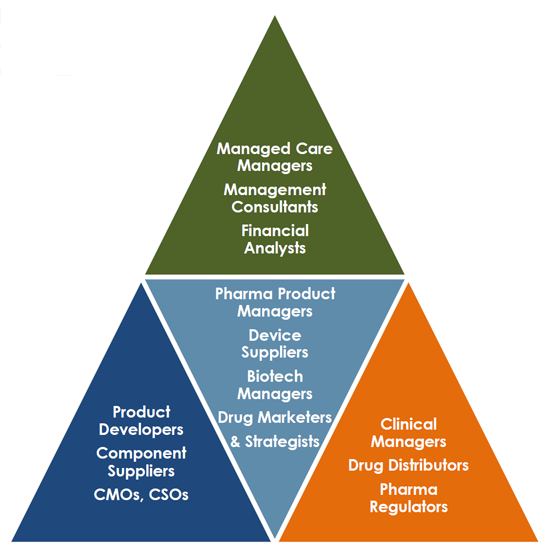 |
市場調查報告書
商品編碼
1718481
即時照護和自我給藥生物製藥市場Point-of-Care and Self-Administered Biologicals - Technology, Therapeutics, Markets, &Forecasts |
||||||
這項新的市場研究 "即時照護和自我管理生物製劑市場" 對推動醫療保健產業這一不斷發展的技術、產品和市場參與者進行了全面的評估和分析。
本研究旨在讓製藥決策者、藥物輸送開發者、設備設計師、新興市場參與者和供應鏈利益相關者詳細了解支持 POC 或自我給藥的供應配置中的生物製劑的經濟性、技術、疾病細分和機會。供應商組織的業務經理、醫療保健管理人員和投資者也可以從這項研究中受益。
針對慢性疾病的工程用
在治療性抗體和候選藥物激增的帶動下,生物製劑在開發流程和臨床試驗方面繼續超過所有其他 NCE。這種從小分子藥物轉向小分子藥物的趨勢為藥物開發商、設備設計師、包裝商以及最終的藥物行銷商創造了機會。
由於生物製劑通常針對慢性病,因此必須制定劑量策略和治療方案以耐受長期使用,並且在許多情況下,供可能受到與其醫療狀況直接相關的限制的患者自行給藥。在未來五年內,隨著藥品開發商滿足越來越多慢性病患者的需求,我們預計包裝將加速從單劑量和多劑量小瓶向預充式註射器的轉變。此外,抗體、荷爾蒙和其他生物製劑的強大生理效應增加了對安全性和依從性的需求。
報告價值矩陣

您將學到什麼
- 哪些市場因素決定了即時診斷生物製劑市場?哪些因素將決定自主管理生物製劑市場?
- 藥物開發組織內供應產品開發決策的關鍵推動因素是什麼?
- 病人支持資源的可用性如何影響生物製劑的處方決策?
- 在 POC 市場領域,藥物開發商和配方工程師之間的關係有多重要?自我管理市場部分又如何呢?
- 生物製劑在哪些治療市場領域中參與競爭?您目前的市佔率是多少?預期成長率是多少?
- 影響 POC 和自我管理生物製劑的選擇標準的關鍵經濟、技術和監管因素有哪些?
調查方法:
該研究方法以對市場影響者進行深入訪談的形式進行初步研究,其中包括關鍵市場參與者、技術開發商、分銷商、行業專家、監管機構、貿易協會和材料標準機構。
根據行業期刊文章、技術文獻、行業出版物、公司數據表和公開聲明以及政府機構和行業協會的統計數據等二手資料來源對主要資訊進行評估和標準化。
使用標準建模和統計技術可以估計和預測市場需求和未來市場活動。
目錄
生物製藥的要素
- 指定容器
- 處方要素
- 生物學的藥物輸送生態系統
- 技術性要素
競爭情形
全球注射器具製造
- 北美
- 歐洲
- 亞洲
治療用生技藥品- 供給品市場區隔
- 照護現場
- 自我給藥
主要的生技藥品供應商的市場影響
藥物類別分析
- 酵素
- 融合蛋白品質
- 顆粒細胞增生因子(G-CSF)
- 荷爾蒙
- 免疫調節藥
- 單株抗體
- 重組蛋白品質
生物學的醫藥品簡介
市場資料與預測
生物學的醫藥品的通知設備
This new market study, "Point-of-Care and Self-administered Biologicals" is a comprehensive evaluation and analysis of the technology, products and participants providing the driving force behind this evolving segment of the healthcare sector.
The study is designed to provide drug company decision makers, drug delivery developers, device designers, healthcare marketers, and supply chain participants with a detailed understanding of the economics, technologies, disease segments, and commercial opportunities for biological drugs with as supplied configurations that support POC administration or self-medication. Provider organization business managers, healthcare administrators and investors will also benefit from this study.
Engineered Therapeutics that Address Chronic Conditions
Led by the proliferation of antibody-based drugs and candidates, biological drugs as a class continue to outpace all other NCEs in development pipelines and clinical trials. This shift away from small molecule drugs is creating opportunities for drug developers, device designers, packagers and - ultimately - pharmaceutical marketers.
Because biological drugs most often target chronic conditions, dosing strategies and treatment protocols must be developed for long-term use, often for self-administration by patients who may have limitations directly related to their condition. The shift in as-supplied packaging from single and multi-use vials to prefilled injection devices will accelerate over the next five years as drug developers move to empower an increasing number of chronically ill patients. The powerful physiological effects of antibodies, hormones and other biological drugs also increase the need for safety and compliance.
Report Value Matrix

What You Will Learn:
- What are the market factors that define the point-of-care biologicals delivery market? What factors define the self-administration biologicals market?
- What are the major factors driving the As Supplied product development decisions within drug development organizations?
- How does the availability of patient support resources influence the prescribing decision for biological drugs?
- How important are drug developer-formulation technologist relationships in the POC market segment? In the self-administration market segment?
- In what therapeutic market segments do biologicals compete? What is their market share today? What is their expected growth rate?
- What are the significant economic, technology, and regulatory factors affecting the selection criteria for point-of-care and self-administered biological drugs?
Methodology:
Research methodology is based on primary research in the form of in-depth interviews with key market participants, technology developers, distributors, industry experts, and market influencers, a list that includes regulatory officials, industry trade groups, and materials standards organizations.
Primary data is evaluated and normalized against secondary sources including trade journal articles, technical literature, industry publications, company data sheets and published information, and statistical data from government agencies and trade associations.
Forecasts and projections of market demand and future market activity are derived using standard modeling and statistical techniques.
Table of Contents
Biological Drug Product Factors
- As-supplied Containers
- Formulation Factors
- Biological Drug Delivery Ecosystem
- Technology Factors
Competitive Landscape
Global Injection Device Manufacturing
- North America
- Europe
- Asia
Therapeutic Biologicals - As Supplied Segments
- Point of Care
- Self-administration
Market Presence of Leading Biologicals Suppliers
Drug Class Analysis
- Enzymes
- Fusion Proteins
- Granulocyte - Colony Stimulating Factor (G-CSF)
- Hormones
- Immune Modulators
- mAbs
- Recombinant Proteins










